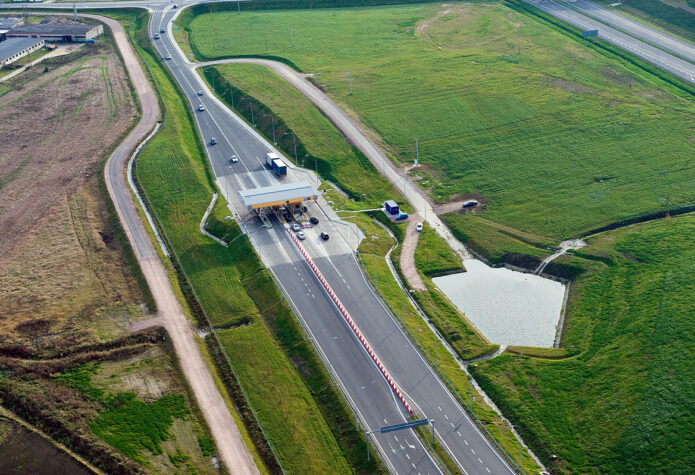A1 motorway to shape a new north-south axis in Europe

Until now, the flow of passengers and cargo from the Nordic countries to the rest of Europe has been routed through Germany. While the development opportunities of this northsouth transport corridor are on the verge of exhaustion, the new throughput is very welcome.
The total costs of the 90-kilometre stretch stand at EUR 700 million. The stretch from north to south between Gdansk and Nowe Marzy in northern Poland is the first phase of the A1 motorway that will head via Poland further on to the Czech Republic, Slovakia and Austria.
“The project fits well into the development strategy for motorways in the Baltic Sea region. The Gdansk area is growing into a principal logistic hub for the whole region,” says Erkki Karmila, Executive Vice President of NIB and Head of International Lending.
“The transportation corridor will enable the efficient movement of goods and people, create new trade and investment opportunities in Poland as well as in the countries that will now gain access to the infrastructure of the Baltic Sea region.”
Upgrading road network
The Polish government’s intentions to upgrade the road network are getting a serious push, because four of the nine trans-European transport corridors established by the European Union cross Poland. Since 2002, Poland has built 300 kilometres of motorways; 570 kilometres of roads are under construction. In the same period, expenses on the maintenance, reconstruction and construction of roads amounted to EUR 9 billion. In 2004, 45 per cent of roads in Poland were in good condition, while 26% required immediate modernisation.
In order to build new highways, the government is calling for private investors who would be offered concessions to finance, construct and operate motorways. The A1 project is being implemented as a Public Private Partnership-PPP. Poland’s government has granted concession lasting until 2039 to the special purpose company, Gdansk Transport Company (GTC). Swedish Skanska Infrastructure Development is the largest shareholder in GTC that also includes British Laing Roads, Polish NDI and South African Intertoll.
“The project is Skanska’s largest construction project to date as the leading contractor in Poland and one of the leading investors in road infrastructure projects in the Nordic and Baltic region,” says Magnus Eriksson, Vice President of Skanska Infrastructure Development AB and Project Director of GTC. He points out that, in addition to transferring operational risks to the private sector, the PPP model offers an opportunity to optimise the project’s life cycle costs. According to Mr Eriksson, applying the PPP model can help reducing the costs by about 10 per cent, compared to traditionally procured projects.
“Using this model for the A1 project makes it possible for Poland to receive, at a lower cost, a fully functional motorway at a fixed price and time with the quality guaranteed until 2039,” concludes Mr Eriksson.
NIB loan
NIB has granted a EUR 140 million loan to GTC. This is the largest individual deal ever sealed by the Bank. The loan agreement with a repayment period of 30 years was signed in summer 2005.
Gdansk—Nowe Marzy motorway
Besides 90 kilometres of motorway, the scope of the project includes 87 bridges, seven interchanges and six service areas.
The road will be 28.5 metres wide, and will have two lanes going each way. 100,000 cubic metres of concrete will be used for the construction, as well as 1.6 million tons of asphalt concrete and 157,000 tons of cement.
The total amount of earthworks will reach 15.6 million cubic metres. The construction period is planned for 3.5 years. GTC has the concession for the next 60-kilometerslong section of the A1 motorway between Nowe Marzy and Torun.
